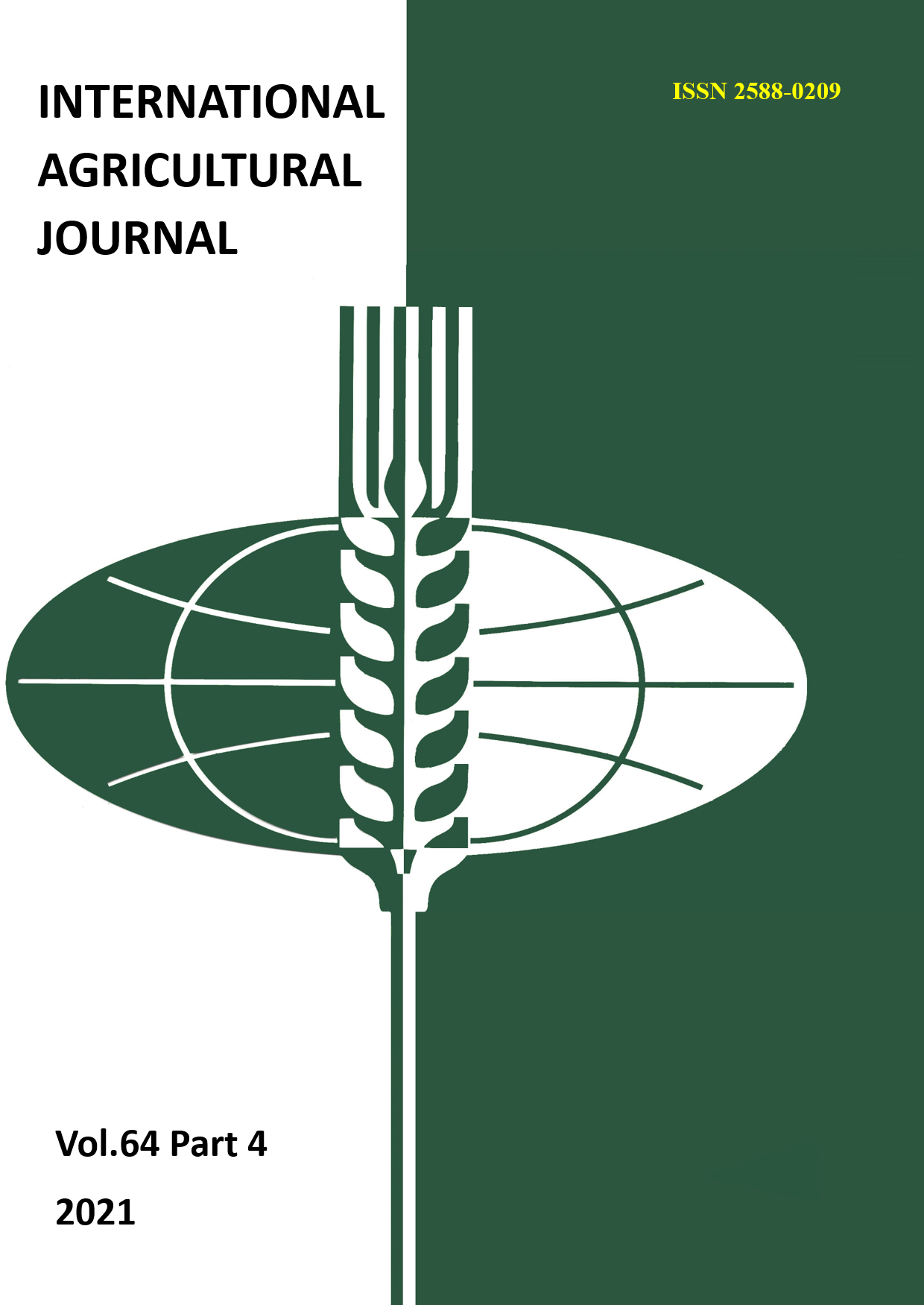GEOGRAPHICAL ASPECT OF ECOLOGICAL AND ECONOMIC JUSTIFICATION OF TERRITORIAL LAND USE STRUCTURE
Main Article Content
Abstract
The article discusses the issues of regulation of the territorial structure of land use in order to ensure land protection and agricultural production ecologization. The work uses the results of a spatial analysis of land degradation and productivity losses under the influence of erosion processes, disturbances in the water-salt balance of soils, and stone contamination in the administrative districts of the Samara region. A model is proposed for sequential regulation of land use structure in three stages with bringing the degree of land degradation in all districts to the average level (with an assessment of 2 points or less). Classification and zoning of lands according to the degradation degree contribute to determination of normative indicators of land use regulation (the necessary localization and the scale of the required impact at each stage); reducing the coefficient of environmental hazard of land use in agricultural production is a criterion for the effectiveness of the impact. It has been established that a general decrease in land degradation in the Samara region by 5.75% will reduce the coefficient of environmental hazard of their use by almost 15%, and its distribution will be relatively leveled (the coefficient of variation across regions will be 1.4% instead of 3.4%). Further development of the program involves the use of erosion maps and data from soil surveys of fields to ensure greater accuracy of localization and assessment of the expected additional income.
Article Details
References
2. Volkov S.N., Komov N.V., Khlystun V.N. (2015) Kak dostich' ehffektivnogo upravleniya zemel'nymi resursami v Rossii? [How to achieve effective land management in Russia?]. Mezhdunarodnyi sel'skokhozyaistvennyi zhurnal, no 3, pp. 3-7.
3. Kaim A., Cord A., Volk M. (2018) A review of multi-criteria optimization techniques for agricultural land use allocation. Environmental Modelling and Software, no 105. Pp. 79-93. DOI 10.1016/j.envsoft.2018.03.031
4. Bagdasaryan A. (2015) Degradatsiya na milliardy: v Rossii istoshcheny svyshe 60% sel'khozugodii [Degradation by billions: over 60% of farmland in Russia is depleted]. Agroinvestor, no 11. URL: https://www.agroinvestor.ru/technologies/article/22499-degradatsiya-na-milliardy-v-rossii-istoshcheny-svyshe-60-selkhozugodiy/
5. Doklad o sostoyanii i ispol'zovanii zemel' v Samarskoi oblasti v 2017 godu [Report on the state and use of land in the Samara region in 2017] / V.V. Malikov. Samara: 2018. 77 p.
6. Balakai G.T., Balakai N.I., Poluehktov E.V., Babichev A.N., Voevodina L.A., Yurina L.I. Priemy povysheniya bioproduktivnosti zemel', sokhraneniya pochvennogo plodorodiya i ehkologicheskoi ustoichivosti agrolandshaftov. Nauchnyi obzor [Methods for increasing the bioproductivity of lands, preserving soil fertility and ecological sustainability of agricultural landscapes. Scientific review]. Novocherkassk: 2011. 71 p.
7. Varlamov A.A., Gal'chenko S.A., Klyushin P.V. Otsenka ehkonomicheskoi tselesoobraznosti ratsional'nogo ispol'zovaniya sel'skokhozyaistvennykh zemel' [Assessment of the economic feasibility of the rational use of agricultural land]. M.: 2014. 169 p.
8. Kashtanov A.N., Lisetskii V.N., Shvebe G.I. Osnovy landshaftno-ehkologicheskogo zemledeliya [Basics of landscape-ecological agriculture]. M.: Kolos, 2009. 127 p.
9. Biologizatsiya zemledeliya v Srednem Povolzh'e [Biologization of agriculture in the Middle Volga region] / V.A. Korchagin S.N. Zudilin, O.I. Goryanin, S.N. Shevchenko, S.V. Obushchenko. Kinel': RITS SGSKHA, 2017. 228 p.
10. Otsenka kachestva i klassifikatsiya zemel' po ikh prigodnosti dlya ispol'zovaniya v sel'skom khozyaistve (prakticheskoe posobie) [Assessment of the quality and classification of lands according to their suitability for use in agriculture (practical guide)] / A.K. Ogleznev, T.A. Kupriyan, T.E. Norkina [i dr.]. M.: VISKHAGI, 2007. 80 p.
11. Yermolaev O.P. (2017) Geoinformation mapping of soil erosion in the Middle Volga region // Eurasian Soil Science, no 50, pp. 118-131. DOI: 10.1134/S1064229317010070.
12. Samokhvalova E.V., Zudilin S.N. (2021) Analysis of spatial propagation of the key degradation processes in the farmlands of Samarskaya oblast. IOP CS: Earth and Environment Science, no 720, art. 012040. DOI: 10.1088/1755-1315/720/1/012040.
13. Samokhvalova E.V., Klyushin P.V., Troz V.B., Rabochev A.L., Obuschenko S.V. (2021) Assessment of anthropogenic load in Samara Region when implementing environmental approach to spatial configuration land use. IOP CS: Earth and Environment Science, preprint.
14. Shapovalov D.A., Klyushin P.V., Murasheva A.A. Metodicheskie osnovy monitoringa zemel' [Methodological foundations of land monitoring]. M.: GUZ, 2010. 238 p.
15. Samokhvalova E.V., Zudilin S.N., Lavrennikova O.A. (2020) Spatial analysis of Samara region land degradation and differentiation of antierosion territory organization. BIO Web of Conferences, no 27, art. 00142. DOI: 10.1051/bioconf/20202700142.
16. Samokhvalova E.V., Zudilin S.N. (2020) Geoprostranstvennyi analiz i otsenka degradatsii sel'skokhozyaistvennykh ugodii Samarskoi oblasti pod deistviem ehrozionnykh protsessov [Geospatial analysis and assessment of agricultural land degradation in the Samara region under the influence of erosion processes]. Mezhdunarodnyi sel'skokhozyaistvennyi zhurnal, no 63 (376), pp 8-13. DOI: 10.24411/2587-6740-2020-14062.

